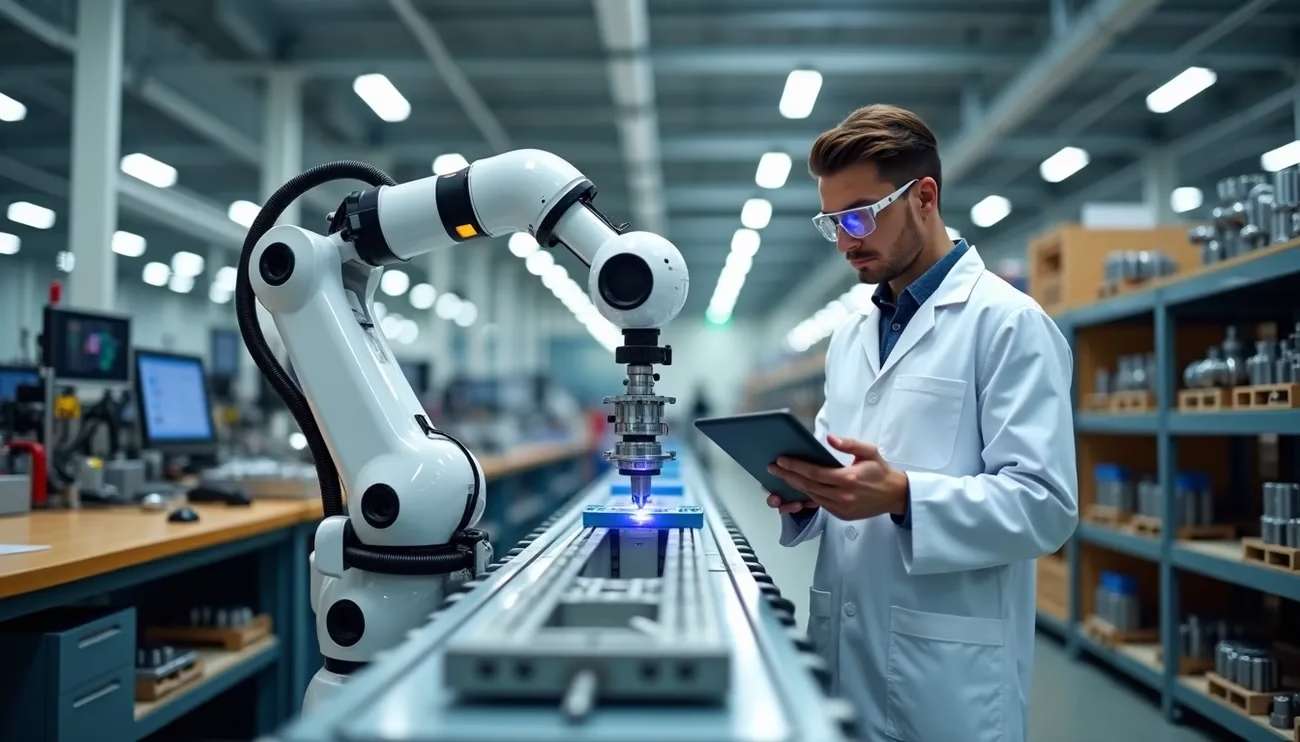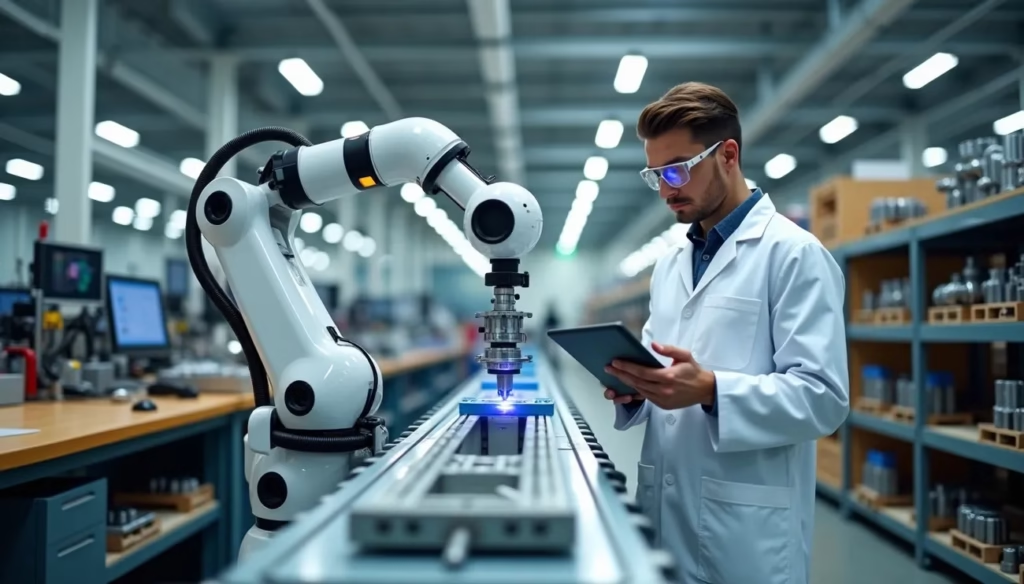Real R&D Tax Credit Examples That Saved Manufacturers $50K+ [2025 Guide]

Manufacturing companies are missing out on massive tax savings. Only 1 in 20 manufacturers claim the research and development tax credit today. R&D tax credit examples demonstrate how businesses save hundreds of thousands of dollars while supporting breakthroughs and development. These fully refundable credits can generate cash payments for manufacturing businesses.
Most manufacturers struggle to understand R&D tax credit qualifications and benefit calculations. Custom manufacturers in New York have claimed more than $650,000 in research and development tax credits successfully. A machine shop in Florida reduced its taxes by nearly $400,000 through R&D tax credits. Research shows that each dollar claimed in R&D tax credits generates $4 in long-term research investment. These examples prove especially valuable when you have businesses invested in breakthroughs.
Our real-life examples showcase how manufacturers have substantially reduced their tax burden through proper R&D tax credit documentation. This piece will help you identify qualifying activities and maximize your savings, especially when you try something new with your manufacturing process or product.
The Tax Burden Manufacturers Face Today
US manufacturers struggle with heavy tax burdens that affect their knowing how to invest, invent, and stay competitive. These businesses must navigate a maze of federal, state, and local taxes that drain money from their operations and growth plans.
Rising federal and state tax liabilities
The tax situation looks challenging for manufacturing businesses with scheduled increases coming up. Recent data shows corporations in manufacturing will see a 0.6% reduction in tax liability as part of value added in 2026, which adds up to $137.20 billion. But this temporary relief hides a worrying trend – key tax reform provisions have started to expire. More will end by late 2025, leading to big tax increases for almost every manufacturer.
Small manufacturers depend heavily on the pass-through deduction, which will completely disappear by late 2025. A survey reveals 93% of pass-through manufacturers say losing this deduction will hurt their knowing how to grow, create jobs, and invest in their business. The estate tax exemption threshold will also drop by half, which means more family-owned manufacturing businesses will face taxation.
Hidden costs in payroll and property taxes
Manufacturers face heavy property tax burdens that directly cut into their profits. Many businesses miss chances to optimize these major expenses. Payroll taxes take a huge chunk from manufacturers’ bottom line – this includes Social Security, Medicare, federal unemployment, and state unemployment taxes.
Managing sales and use tax creates another headache. The US has over 12,000 different rates, and each state follows its own rules. Manufacturers often pay too much by not checking their suppliers’ charges. These indirect taxes can add up to massive amounts for large operations.
Why reducing tax burden is critical for growth
Lower taxes help manufacturers boost output and hire more people. Economic models suggest targeted tax credits for US manufacturing could boost the economy and create 11.2 million new jobs. Real household income could jump by 9.1%. Manufacturing jobs pay better than average and come with detailed benefits packages.
Well-designed tax incentives can lift total national investment and GDP. Recent laws show that requiring domestic investment to get tax credits helps increase total national investment. But giving unconditional corporate tax cuts alone doesn’t seem to stimulate investment.
Smart tax planning, especially through R&D tax credit claims, gives manufacturers a great way to get relief from these heavy burdens while stimulating innovation and growth.
How R&D Tax Credits Work for Manufacturers
Manufacturers can make use of R&D tax credits to offset research costs and welcome innovation. This credit reduces tax liability dollar-for-dollar by 15.8% of qualified spending in a 21% corporate tax environment (11.1% under the alternative simplified method). Manufacturing businesses can discover the full potential of tax savings through strategic R&D activities.
What qualifies for R&D tax credits
R&D tax credits require manufacturers to meet the IRS four-part test:
- Elimination of Uncertainty: Activities must attempt to eliminate uncertainty about developing or improving a product or process
- Process of Experimentation: Companies need to show they evaluated alternatives through modeling, testing, or systematic trial and error
- Technological in Nature: Research must rely on hard sciences like engineering, physics, or chemistry
- Qualified Purpose: Activities should create new or improved products/processes that boost performance, function, reliability, or quality
Companies often qualify through developing prototypes, improving manufacturing processes, designing custom tooling, and testing alternative materials.
R&D tax credit calculation example
These are the two main calculation methods:
- Regular Method: 20% of qualified expenses over a base amount (limited to 16% of average annual receipts)
- Alternative Simplified Method: 14% of qualified expenses exceeding 50% of the average expenses for the preceding three tax years
Let’s look at an example. A company with $100,000 in average qualified expenses over three years and $125,000 in current expenses would receive a simplified credit of 14% of $75,000, or $10,500.
Federal vs. state-level credits
The federal R&D tax credit serves as a permanent incentive for qualified research activities. Many states provide additional R&D tax credits, which creates a better chance for tax savings. Companies can claim these credits on Form 6765 (Credit for Increasing Research Activities).
Refundable vs. non-refundable credits
R&D tax credits are mostly non-refundable and can reduce tax liability to zero without generating refunds. Companies can carry unused credits back one year and forward up to 20 years. Qualifying startups with less than $5 million in gross receipts can use up to $250,000 of R&D credits against payroll taxes instead of income taxes.
8 Real R&D Tax Credit Examples That Saved Over $50K
Let’s take a look at some success stories where manufacturers saved big on taxes through strategic R&D claims. These examples show how R&D tax credits work in a variety of manufacturing settings.
1. Machine shop in Florida: $400K saved
A Florida-based machine shop earned $400,000 in federal tax savings over four years by documenting their R&D tax credits. Tax experts found $2,060,720 in qualified research spending – $1,550,680 went to wages, $145,940 to supplies, and $364,100 to contract research.
2. Custom manufacturer in New York: $650K saved
A custom manufacturer in New York claimed more than $650,000 in research and development tax credits. Their R&D analysis showed nearly $7 million in wages that qualified as research and development costs.
3. Specialty manufacturer in Florida: $100K saved
A Florida specialty manufacturer found that there was over $1 million in qualified research and development costs, which ended up saving them nearly $100,000 on federal taxes.
4. Hydrogen storage tech firm: COVID-era survival
Hydrogen in Motion (H2M), a Vancouver company developing state-of-the-art hydrogen storage technology, faced major funding challenges during COVID-19. The SR&ED program’s advisory service provided crucial support that kept their research going when most activities had stopped.
5. AI in mining: Motion Metrics’ transformation
Vancouver’s Motion Metrics became a game-changer in mining by using state-of-the-art AI, machine learning, and computer vision technology. SR&ED tax credits were crucial to their success. These credits helped them expand their R&D activities while growing steadily.
6. Eco-friendly pet food: Wilder Harrier’s innovation
Montreal’s Wilder Harrier created eco-friendly pet food using unique protein sources like crickets, black soldier flies, and upcycled produce. Their founder said: “This program allowed us to fund the development of the science behind Wilder Harrier’s products… enabling us to significantly accelerate our technical development”.
7. Biotech startup: AmacaThera’s clinical trials
AmacaThera, based in Toronto, developed technology to reduce post-operative opioid needs. Their CEO highlighted the program’s value: “The SR&ED Program was vital to our company’s growth… especially critical during COVID-19 as progress was stalled and financing opportunities were delayed”.
8. Signage manufacturer: Pattison’s ERP overhaul
Toronto’s Pattison Sign Group credits SR&ED tax incentives for their position as Canada’s leading sign manufacturer. After an audit, they installed a new Enterprise Resource Planning system that optimized documentation collection across facilities. This enhanced their future claims while supporting their innovative R&D team.
How to Maximize Your R&D Tax Credit Claim
Documentation is the life-blood of successful R&D tax credit claims. Many manufacturers find this vital aspect challenging. Your claim’s success depends on smart approaches to track, document, and submit research activities.
Track time and technical activities
A strong system should track time, expenses, and outcomes of R&D projects to substantiate claims where innovation moves quickly across multiple areas. Time-tracking or project management tools record hours as work happens, which beats estimating after the fact. Software development and engineering service manufacturers already use advanced time-tracking systems that become the foundation of an R&D claim.
Document failed experiments and iterations
Failed attempts bring value by showing active efforts to overcome technical challenges. Records should include experiments, test conditions, results of both successes and failures, and follow-up adjustments for each hypothesis. Some companies have doubled or tripled their eligible credits by properly documenting prototypes, testing, and failed projects.
Use tools to simplify R&D tax credit claim example
API connections between payroll, project management, and accounting systems through specialized software help identify qualified R&D expenses. These automated tools cut filing time from weeks to days by eliminating time-consuming surveys and technical interviews. Companies save 50-75% compared to accounting firm fees with these automated solutions.
Avoid common mistakes in documentation
Technical narratives need clear explanations of objectives, challenges, experimentation methods, and results instead of vague project descriptions. Weak claims often fall apart under scrutiny because record-keeping becomes an afterthought. On top of that, many companies miss indirect costs like utilities and software licenses used in R&D work.
Conclusion
R&D tax credits are a great yet untapped chance for manufacturers in America. Companies have saved hundreds of thousands in taxes while propelling their innovation forward. Still, most manufacturing businesses leave this money untouched.
Manufacturers face tougher tax challenges today. Many key provisions will expire by 2025. Strategic tax planning has become crucial to stay competitive and grow. R&D credits provide a powerful answer to this challenge.
Most manufacturing environments see qualifying activities every day. Process improvements, prototype development, and material testing are common examples. Companies need to pass the four-part IRS test with proper documentation. Manufacturers who use resilient infrastructure to track time, expenses, and technical activities have better odds of maximizing their claims.
Eight ground examples above show how manufacturers of all sizes achieved big savings. These success stories share one thing – detailed documentation and smart identification of qualifying activities.
Your manufacturing business probably does qualifying R&D work already. You just need to decide if you’ll grab these tax benefits or keep paying more than needed. Look at your operations through R&D qualification criteria first. Then set up proper tracking systems for future work.
Manufacturers who act now will gain immediate tax savings and long-term competitive edge. This makes sense since every dollar saved through R&D credits gets more and thus encourages more research investment. Your journey to lower taxes and increased innovation starts only when we are willing to see the R&D work you already do.





